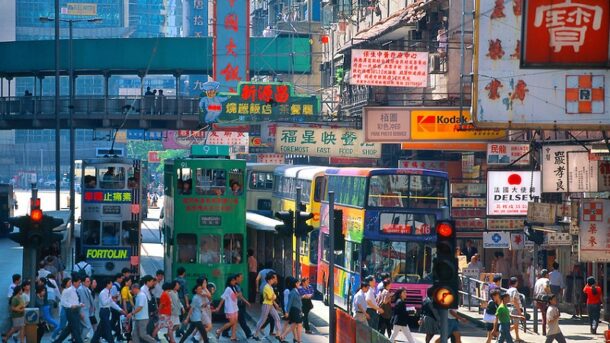The Hong Kong anthem, also known as “March of the Volunteers,” has been a source of controversy in recent years. As Hong Kong continues to navigate its relationship with mainland China, the anthem has become a symbol of the city’s struggle to maintain its identity and autonomy. However, the anthem can also serve as an opportunity to bring together Hong Kong’s diverse communities and celebrate their shared values.
The History of the Hong Kong Anthem
“March of the Volunteers” was written in 1935 as a patriotic song to inspire resistance against Japanese invasion. It was later adopted as the national anthem of the People’s Republic of China in 1949. When Hong Kong was returned to China in 1997, it was decided that the anthem would be used for official occasions such as flag-raising ceremonies and sporting events.
However, the use of the anthem has become a contentious issue in recent years. Pro-democracy activists argue that the anthem represents the Communist Party’s values and is incompatible with Hong Kong’s democratic aspirations. Some have even called for a boycott of the anthem altogether.
The Anthem as a Symbol of Hong Kong Identity
Despite the controversy surrounding the anthem, it can also be seen as a symbol of Hong Kong’s unique identity. The city has a long history of blending Chinese and Western cultures, and the anthem can be seen as a reflection of this hybrid identity. The lyrics of the anthem call for unity and sacrifice in the face of adversity, values that are shared by many Hong Kong residents regardless of their political beliefs.
Moreover, the anthem can be used to celebrate the city’s diverse communities. Hong Kong is home to people from a wide range of backgrounds, including Chinese, British, South Asian, and Filipino. By embracing the anthem as a symbol of Hong Kong’s shared values, these communities can come together and celebrate their common heritage.
Using the Anthem to Bridge Divides
In recent years, Hong Kong has become increasingly polarized along political lines. The anthem has become a lightning rod for these divisions, with pro-democracy activists seeing it as a symbol of repression and pro-Beijing supporters seeing it as a symbol of national pride. However, the anthem can also be used to bridge these divides and bring people together.
One way to achieve this is by emphasizing the universal values embodied in the anthem, such as unity, sacrifice, and perseverance. These values are shared by people of all political persuasions and can serve as a common ground for dialogue and understanding. Moreover, by celebrating the city’s rich cultural heritage, the anthem can be used to promote diversity and inclusiveness.
Conclusion
The Hong Kong anthem is a symbol of the city’s complex history and identity. While it has become a source of controversy in recent years, it can also be used as an opportunity to unite Hong Kong’s diverse communities and celebrate their shared values. By emphasizing the universal themes embodied in the anthem and promoting cultural inclusiveness, we can bridge divides and build a stronger, more resilient Hong Kong for future generations.




